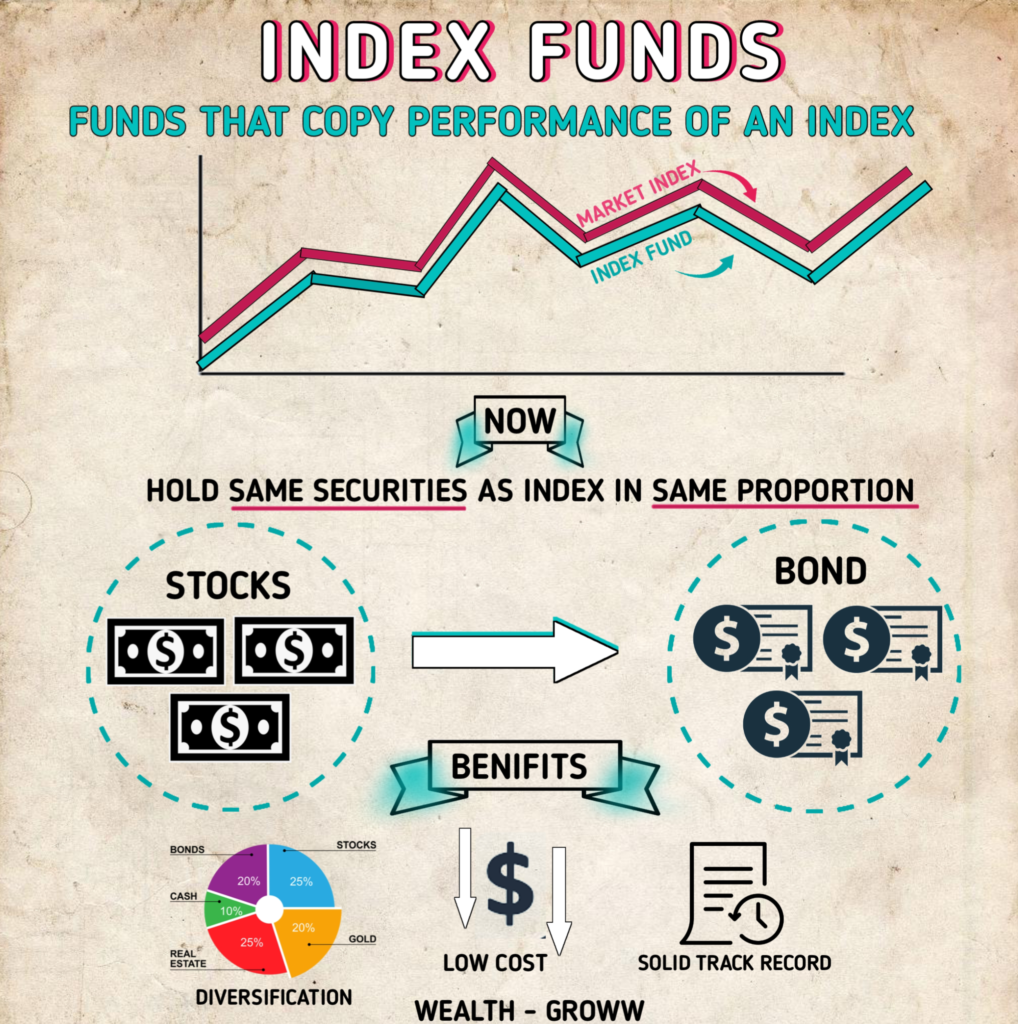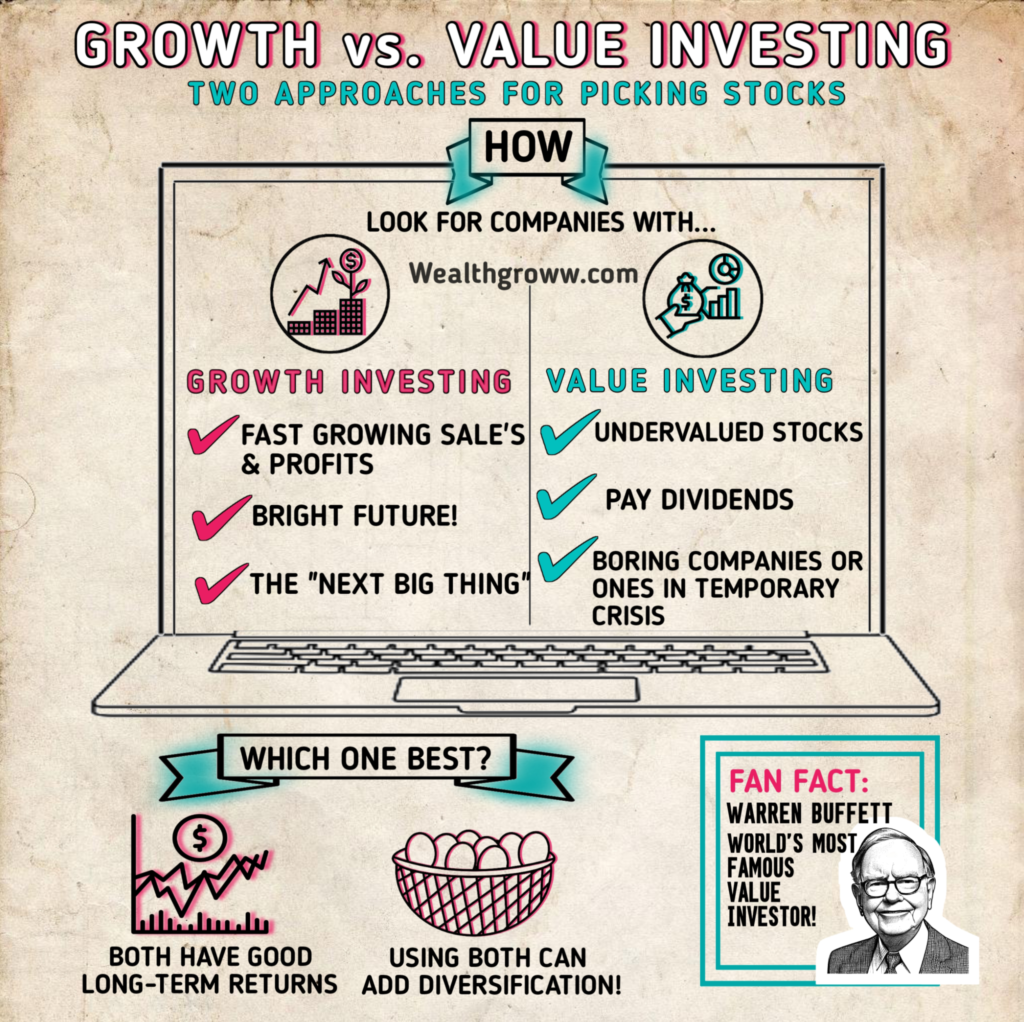Investing
6: Investment Strategies
In above discussion we had clearification on types of investment it’s mixes and types of accounts you should go for. But you still need to learn about the basic approaches to picking and using investments.
Here are a few approaches to consider.
Active vs. index funds
- Active fund: A mutual fund that’s overseen by a person (or a group of people or in some cases a computer program) who handpicks securities in an attempt to beat the returns of the overall market.
- Index fund: It is a mutual fund which will mimic a particular benchmark, like A&P 500, in regard to its returns.

Comparison of active and index funds:

Though active funds might sound appealing but in real it’s genuine to allow someone to pick stocks for them. —historical returns show that, on average, index funds generally perform much better.
“By periodically investing in an index fund, the know-nothing investors can actually outperform most investment professionals.“
—Warren Buffett
Low fees helps in Index fund’s performance, as in active funds the price paid to manager and the team of researchers is quite high. It might be that , at present a percentage point may feel insignificant but over the decades it could really cut into your returns.
Consider how a sum of $100,000 will grow over time (assuming 7% annual returns) given low fees of 0.25% or moderate fees of 1.25%.

Growth vs. value
Other strategies include growth and value investing:
- Growth: Investment in those companies you comparatively consider growing and stronger than others. Most of the high flying tech companies can be an option.
- Value: Investment in those companies having cheap stocks in comparison to earning potential. Many value investors like to buy stocks of well-known companies right after a big scandal, when the stock price is temporarily in the dumps.

Well it will not be wrong to consider growth investing as buying a tesla – it have both trendy and pricey touch, But you should be confident that it will perform well – while value investing can be compared with buying a Camry off Craigslist. It’s cheap, with good bones, and it could either die tomorrow or run reliably for the next decade.
There is no need to choose in between growth or value investing. Other than that experts recommend to have a mix of both in your portfolio.
Momentum
In physics we all are aware of Inertia. I.e, a body will remain in their state until and unless an external force is applied to it.
And this principle also works in momentum investing. Having a trend which breaks it isn’t wrong.
Momentum investors have a good eye on stocks and if one is persistently rising they buy it. If a stock’s price is falling, they sell. As per the studies, in theories it is a successful strategy but can be complex and difficult when brought in practice in real world.
